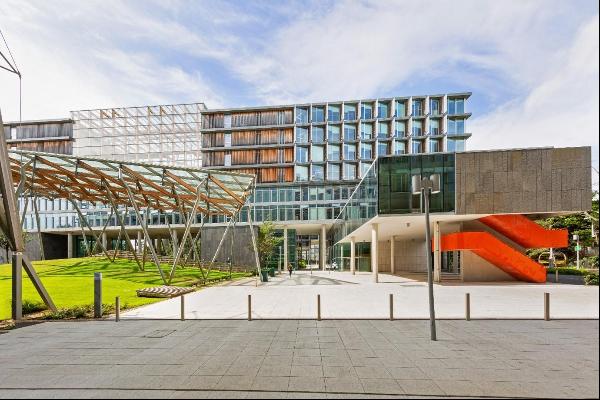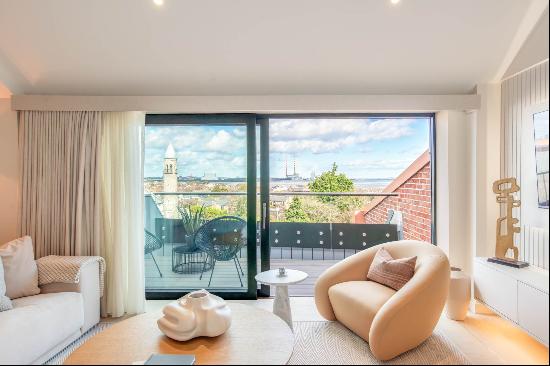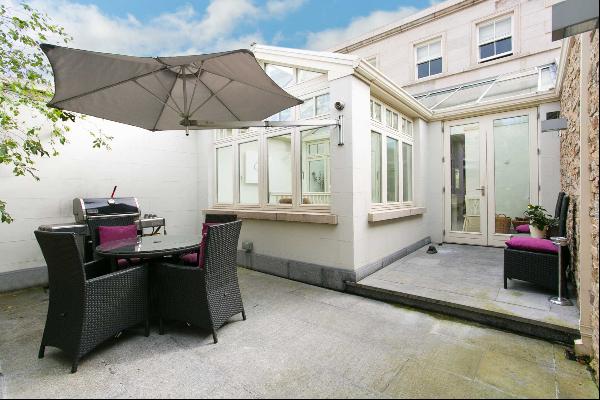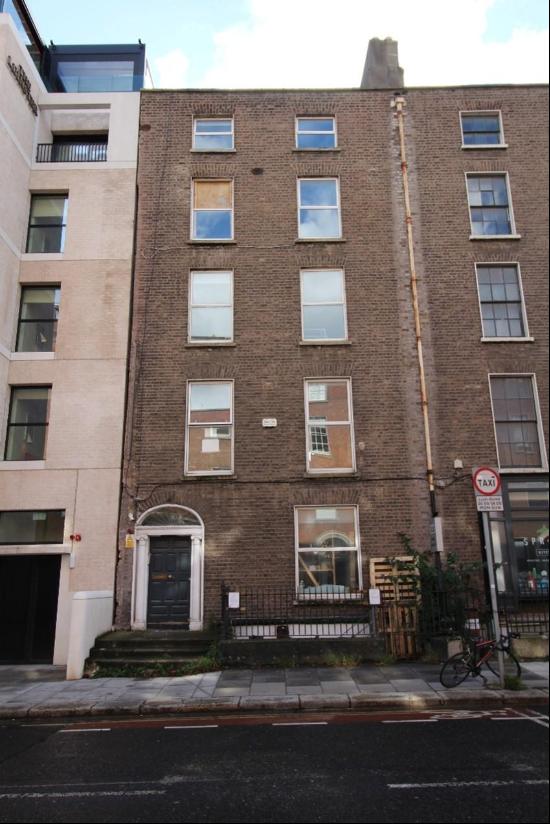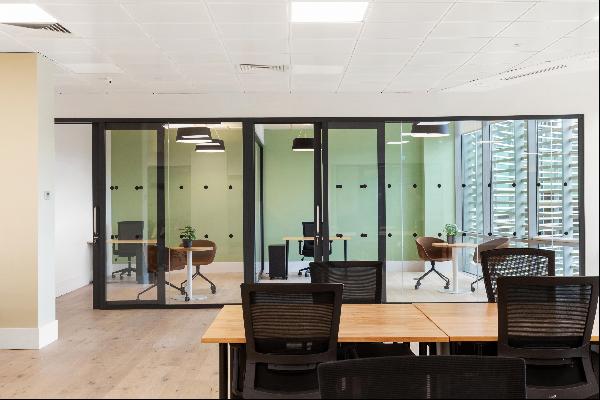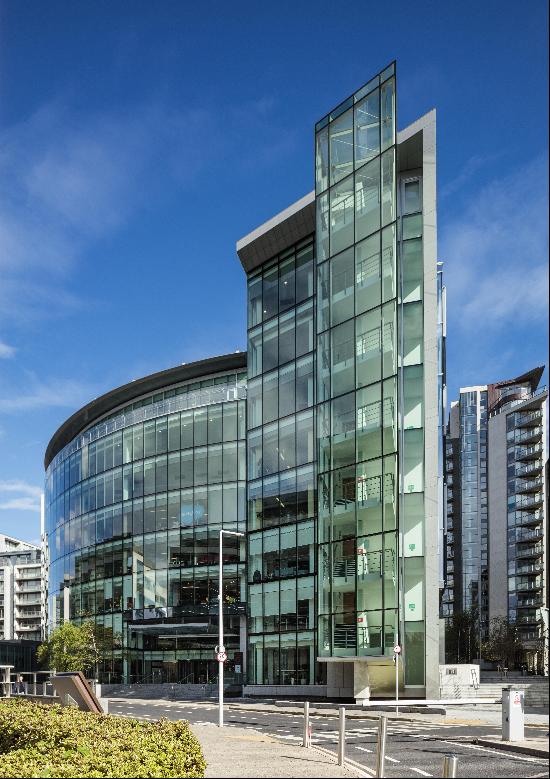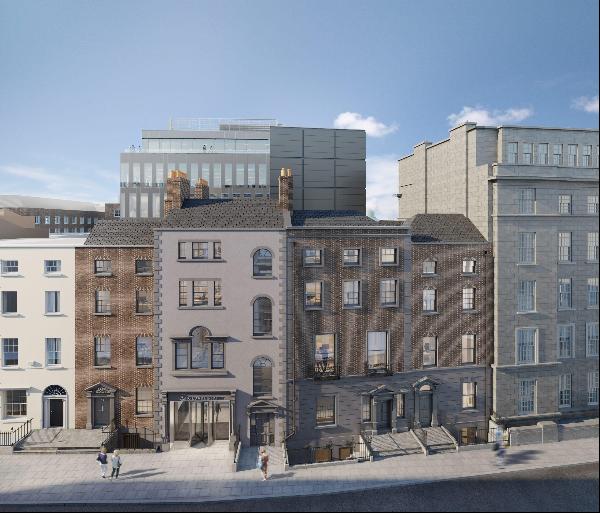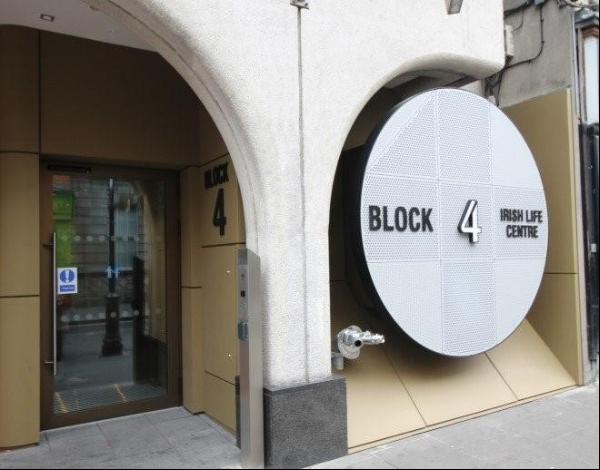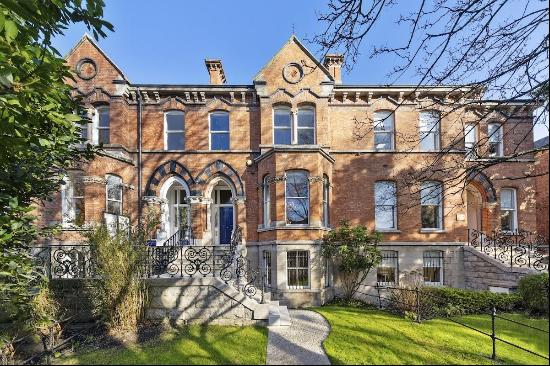
By Kate Youde
There is attention to detail in every aspect of ophthalmologist Jane McQuillan’s home, down to the brass door handles, which feature a Tudor rose design and the initial letter of the property’s original occupants.
Designed in the late 1870s by the Irish architect George Coppinger Ashlin, St George’s is in the coastal village of Killiney, a 45-minute drive south of Dublin. The red-brick house was built as a home for Ashlin and his bride, Mary, the daughter of the Gothic revivalist and Palace of Westminster architect Augustus Pugin.
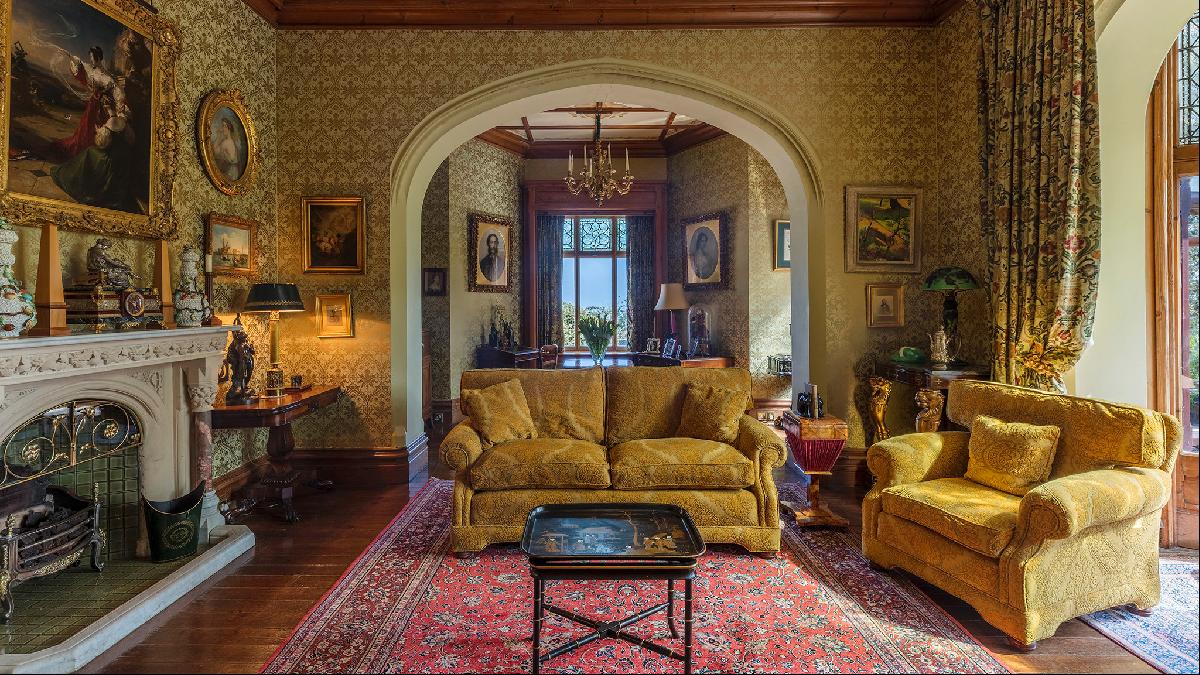
When McQuillan and her husband Robert, also a medic, bought the property in 1989 it was “a wreck”. “After I moved in and realised how bad everything was I sat down one day on the steps and cried,” she says.
It took a “lifetime” to restore the neo-Gothic house and its bespoke Portland stone fireplaces, stained glass windows and pitch pine woodwork. But the hard work paid off, revealing original features crafted using traditional techniques. “Every bit of this house is Arts and Crafts,” says McQuillan. The home is on the market for €8.5m.
Ashlin, known for his Irish churches and cathedrals, is believed to have taken inspiration for his house from Pugin’s family home, The Grange, in Ramsgate, Kent (available today as a holiday let through the Landmark Trust).

Both feature a tower. McQuillan’s family use the St George’s square tower room as a library. It has what she tells her grandchildren is a “secret passage”: a stone spiral staircase in an adjoining fairytale turret leads up to the “battlement” (a rooftop terrace).
There is also a small chapel with a consecrated altar, which she understands Ashlin built after 10 years in the house to mark the arrival of his daughter, Miriam. McQuillan, who commissioned a historian to write a book on St George’s and Killiney, and ran tours of the restored house pre-pandemic, says the room features stained glass by Mary Ashlin.
“Behind the altar she has incorporated George Ashlin and herself, and their young child, into the nativity scene,” she says.
McQuillan and her family use the oratory for their own celebrations. “We had a mass there when our [elder] daughter was getting married and we had another one when our first grandchild, our little grandson, came along,” she says.

The work to renovate the house included years spent removing white paint covering the beautiful, original woodwork. There were also two house fires to contend with, not to mention redoing the electrics, plumbing and plastering. But it was the garden that really reduced McQuillan to tears in the early days.
Digging with her spade into what she thought was soil, she found only a “mattress of weeds” and rock. Out every day in her Wellingtons, it took seven years to get the 1.2-acre grounds into shape. She got a JCB in to replace all the soil and had the sloped garden terraced.
Now there are two large lawns and thousands of plants for a new owner to enjoy. These include varieties native to Australia, such as grevillea and banksia, supported by what McQuillan calls the house’s “microclimate”: it is far enough from the Irish Sea to be protected from its harshest winds but close enough that most rooms enjoy views of Killiney Bay.

A friend jokes that she could use a zip line to get to the shore where she likes to swim all year round; otherwise, it is a 10-minute downhill walk.
McQuillan, who lives in the house with Robert, their younger daughter and a housekeeper, is now looking to downsize. She has no regrets about taking on the challenging restoration.
“You know the words of Garth Brooks’ song, ‘I’m glad I didn’t know … the way it all would go. Our lives are better left to chance’?” says McQuillan. “Had somebody told me in advance, I’d have said, ‘No thanks, bye.’ But I didn’t.”
Photography: Matteo Tuniz @ MediaPro; Christie’s International Real Estate


